Recent Publications

Ala Aiob, Karina Naskovica, Avishalom Sharon, Jacob Bornstein: A possible association between hydatidiform mole and the COVID-19 pandemic: A retrospective cohort study (Gynecol Oncol .)
Objective: To confirm an increase in the number of women with molar pregnancy during the COVID-19 pandemic.
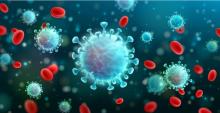
Milana Frenkel-Morgenstern: Specific Susceptibility to COVID-19 in Adults with Down Syndrome (Neuromolecular Med .)
The current SARS-CoV-2 outbreak, which causes COVID-19, is particularly devastating for individuals with chronic medical conditions, in particular those with Down Syndrome (DS) who often exhibit a higher prevalence of respiratory tract infections, immune dysregulation and potential complications. The incidence of Alzheimer's disease (AD) is much higher in DS than in the general population, possibly increasing further the risk of COVID-19 infection and its complications. Here we provide a biological overview with regard to specific susceptibility of individuals with DS to SARS-CoV-2 infection as well as data from a recent survey on the prevalence of COVID-19 among them.
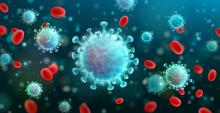
Sumit Mukherjee, Bodhisattwa Banerjee, David Karasik, Milana Frenkel-Morgenstern: mRNA-lncRNA Co-Expression Network Analysis Reveals the Role of lncRNAs in Immune Dysfunction during Severe SARS-CoV-2 Infection (Viruses )
The recently emerged SARS-CoV-2 virus is responsible for the ongoing COVID-19 pandemic that has rapidly developed into a global public health threat. Patients severely affected with COVID-19 present distinct clinical features, including acute respiratory disorder, neutrophilia, cytokine storm, and sepsis. In addition, multiple pro-inflammatory cytokines are found in the plasma of such patients. Transcriptome sequencing of different specimens obtained from patients suffering from severe episodes of COVID-19 shows dynamics in terms of their immune responses. However, those host factors required for SARS-CoV-2 propagation and the underlying molecular mechanisms responsible for dysfunctional immune responses during COVID-19 infection remain elusive. In the present study, we analyzed the mRNA-long non-coding RNA (lncRNA) co-expression network derived from publicly available SARS-CoV-2-infected transcriptome data of human lung epithelial cell lines and bronchoalveolar lavage fluid (BALF) from COVID-19 patients.
Eric S Shinwell, Polina Gurevitz, Igor Portnov: Current evidence for prenatal and postnatal corticosteroids in preterm infants (Arch Dis Child Fetal Neonatal Ed .)
Antenatal corticosteroids undoubtedly save many lives and improve the quality of many others. However, the currently accepted dosage schedule has been in place since 1972, and recent studies have suggested that beneficial effects may be seen with less. Most but not all studies of long-term outcome show no adverse effects. The use of antenatal corticosteroids in women with COVID-19 raises important questions regarding potential risks and benefits. However, currently, most authorities recommend continuing according to published guidelines. With regard to postnatal corticosteroids, alternatives to systemic dexamethasone, the somewhat tainted standard of care, show promise in preventing bronchopulmonary dysplasia without adverse effects. Systemic hydrocortisone and inhaled corticosteroids are of note. The mixture of surfactant and corticosteroids deserves particular attention in the coming years.
Routine fixed-dose heparin vs. ACT-guided heparin administration for elective PCI and its influence on patient in-hospital outcome: a retrospective study (Coron Artery Dis . )
Activated clotting time (ACT)-based heparin dosing during percutaneous intervention (PCI) is recommended by Society guidelines. However, the relationship between ACT and outcome in the setting of elective PCI has not been sufficiently studied. We sought to evaluate the in-hospital outcome of patients undergoing elective PCI while receiving fixed-dose heparin without ACT measurement versus those with ACT-guided management. (Oron Berkowitz, Majdi Halabi, Alexander Goldberg, Inna Rosenfeld, Adi Sharabi-Nov, Zippi Regev-Avraham, Zeev Israeli)
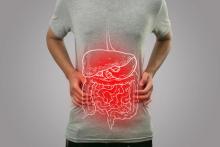
Khalaf Kridin: Estimating the Odds of Ulcerative Colitis-Associated Pyoderma Gangrenosum: A Population-Based Case-Control Study (Dermatology .)
Ulcerative colitis (UC) is a well-known underlying comorbidity of pyoderma gangrenosum (PG). However, the risk conferred by UC for the subsequent development of PG is yet to be elucidated. We aimed to estimate the magnitude of the association between UC and the subsequent occurrence of PG, which would enable us to assess the odds of PG developing in individuals with a history of UC.
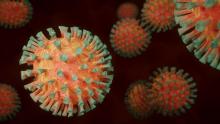
Khalaf Kridin: Epidemiology of Pemphigus (JID Innov .)
Pemphigus is an epidemiologically heterogeneous group of autoimmune bullous diseases comprising pemphigus vulgaris (PV), pemphigus foliaceus, paraneoplastic pemphigus, IgA pemphigus, and pemphigus herpetiformis. Recently, our knowledge about the frequency of pemphigus, which is highly variable between different populations, has considerably expanded, and the first non-HLA genes associated with PV have been identified. In addition, a variety of comorbidities, including other autoimmune diseases, hematological malignancies, and psoriasis, have been described in this variant. Here, initial data about the impact of COVID-19 on this fragile patient population are discussed and perspectives for future epidemiological studies are outlined.
Vertical Transmission of Extended-Spectrum, Beta-Lactamase-Producing Enterobacteriaceae during Preterm Delivery: A Prospective Study (Microorganisms .)
Maternal carriage and vertical transmission of extended-spectrum, beta-lactamase-producing Enterobacteriaceae (ESBL-E), such as Escherichia coli, hamper the treatment of infections, resulting in high morbidity. E. coli is the most frequent cause of early-onset neonatal sepsis (EOS) in preterm infants, where ESBL-E are more frequently isolated. In this prospective, case-controlled study, maternal rectovaginal ESBL-E colonization and vertical transmission to preterm infants were assessed in 160 women with preterm premature rupture of membranes (PPROM; 57.4%) or preterm labor (42.6%); additional cultures were obtained from the placenta, amnion, and umbilical cord during preterm labor. (Maya Frank Wolf, Raneen Abu Shqara, Karina Naskovica, Inna Amdur Zilberfarb, Inshirah Sgayer, Daniel Glikman, Hagai Rechnitzer, Vered Fleisher Sheffer, Jacob Bornstein)

Tawfik Khoury: Platform introducing individually tailored variability in nerve stimulations and dietary regimen to prevent weight regain following weight loss in patients with obesity (Obes Res Clin Pract . )
Prevention of weight regain following successful weight loss is a major challenge in the treatment of obesity, irrespective of the weight reduction method used. The majority of individuals regain the lost weight over time; thus, achieving long-term sustainability in weight loss remains an unresolved issue. A compensatory adaptation to the weight loss methods occurs in several body organs and partly explains the lack of sustainable effect. Variability is inherent in many biological systems, and patterns of variability constitute a body mechanism that is active at several levels, starting from the genes and cellular pathways through to the whole-organ level. This study aimed to describe a platform that introduces individually tailored variability in vagal nerve stimulation and dietary regimen to ensure prolonged and sustainable weight loss and prevent weight regain.
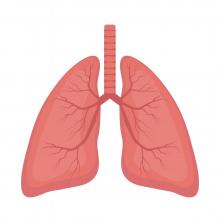
Khalaf Kridin: A History of Asthma Increases the Risk of Bullous Pemphigoid: Insights from a Large Population-Based Study (Dermatology .)
Bullous pemphigoid (BP) and asthma both share a pathogenic role of eosinophils and immunoglobulin E (IgE) and favorable response for corticosteroids and omalizumab. However, the association between these conditions is yet to be investigated. We sought to estimate the risk of having BP among patients previously diagnosed with asthma and to characterize patients with coexistent BP and asthma.
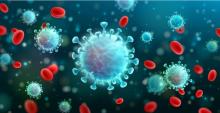
Milana Frenkel-Morgenstern: The use of aspirin for primary prevention of cardiovascular disease is associated with a lower likelihood of COVID-19 infection (FEBS J .)
Acetylsalicylic acid (aspirin) is commonly used for primary and secondary prevention of cardiovascular diseases. Aspirin use is associated with better outcomes among COVID-19 positive patients. We hypothesized that aspirin use for primary cardiovascular disease prevention might have a protective effect on COVID-19 susceptibility and disease duration. We conducted a retrospective population-based cross-sectional study, utilizing data from the Leumit Health Services database.
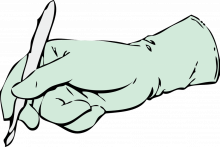
Emergency open surgery with a duodenotomy and successful removal of an impacted basket following a complicated endoscopic retrograde cholangiopancreatography procedure: a case report (J Med Case Rep . )
Current management of choledocholithiasis entails the use of endoscopic retrograde cholangiopancreatography (ERCP) and clearance of the common bile duct. A rare complication of this procedure is the impaction of the basket by a large stone, which necessitates lithotripsy. Here we report a case of an impacted basket during ERCP, which was managed by open surgery with a duodenotomy and the manual removal of the basket. (Ibrahim Abu Shakra, Amitai Bickel, Mahran Badran, Fahed Merei, Samer Ganam, Walid Kassis, Eli Kakiashvili)
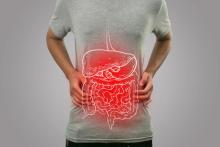
Tawfik Khoury, Wisam Sbeit: Cost-Effectiveness of Rapid On-Site Evaluation of Endoscopic Ultrasound Fine Needle Aspiration in Gastrointestinal lesions (Cytopathology .)
Rapid on-site evaluation (ROSE) can improve adequacy rates of fine-needle aspiration (FNA) and thus save operational costs. Our aim was to assess cost-efficacy of ROSE performed during endoscopic ultrasound (EUS)-FNA of gastrointestinal lesions.
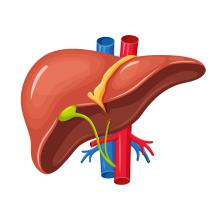
Meral Aias, Maya Azrad, Gewa Saad, Tamar Leshem, Zohar Hamo, Layan Abu Rahmoun, Avi Peretz: Different bile acids have versatile effects on sporulation, toxin levels and biofilm formation of different Clostridioides difficile strains (J Microbiol Methods )
Clostridioides difficile infection develops following ingestion of virulent stains by a susceptible host. Once germinated, toxins TcdA and TcdB, and in some of the strains binary toxin, are secreted, eliciting disease. Bile acids play a significant role in the process of spore germination and outgrowth, with cholate and its derivative enhancing colony formation, while chenodeoxycholate inhibit germination and outgrowth. This work investigated bile acids' impact on spore germination, toxin levels and biofilm formation in various strain types (STs).
Elon Glassberg: Post-expiry stability of freeze-dried plasma under field conditions - Can shelf life be extended? (Transfusion . )
This prospective study evaluated the effect of routine, uncontrolled, Israeli field storage conditions on the safety and efficacy of Lyo-Plas N Freeze-Dried Plasma (FDP) at the end of the manufacturer's shelf life, and up to 24 months post expiry. Clotting factors V, VIII and XI, proteins S, C, fibrinogen, PTT, ATIII, VWF, and INR as well as TEG, DDM, residual moisture, pH, and sterility of FDP returned from field units after uncontrolled storage were evaluated.





